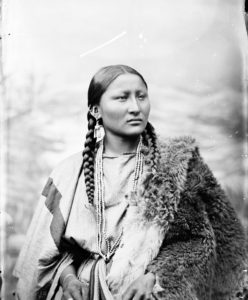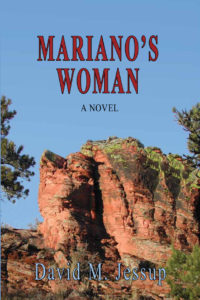I love this photo for the back cover of my new historical novel, “Mariano’s Woman”

This photo was taken by L. A. Huffman in 1878 at Fort Keogh, Montana, of Pretty Nose, a Cheyenne Woman, courtesy of Montana Historical Society Research Center Archives.
Although the image is not of a Flathead woman, it evoked in me the spirit of Takánsy as I imagine her: strong, proud, yet troubled and unsure about her future.
Takánsy was a real person whose story has always fascinated me. She was born into the Flathead tribe along the Bitterroot River in Montana sometime in the early 1800s, then left her people to marry a French fur trader named Louis Papín. After she was traded to Mariano Medina in 1844 for the substantial price of six horses and six blankets, they set up a successful trading post and stage stop on the Big Thompson River near Loveland, Colorado, known as Mariano’s Crossing.
When her daughter died in 1872, Takánsy was heartbroken. According to historian Zethyl Gates, she would beat her chest and wail, ‘Me sickee, me go to Lena!’ That got me to wondering, which afterlife? Takánsy was both Catholic and Native American. Would she and her daughter be able to connect in the spirit world?
Exploring the great mystery of what happens to our spirits after we die became a theme of the book, along with imagining the events in Takánsy’s girlhood that might have led her to leave her people. That took me on an eye-opening journey through nineteenth-century clashes between Jesuit “blackrobes,” mountain men and Montana Indian tribes.
Mariano’s Woman completes a trilogy that includes Mariano’s Crossing and Mariano’s Choice, all published by Pronghorn Press. The books may be ordered from local bookstores or purchased online on Amazon. Autographed copies are available on my website.

 Readers of my first two historical novels often ask why Takánsy, the Indian wife of Mariano Medina, inflicted scars on her arm for some mysterious reason. Now, with the publication of my third historical novel, Mariano’s Woman, they’ll have an answer.
Readers of my first two historical novels often ask why Takánsy, the Indian wife of Mariano Medina, inflicted scars on her arm for some mysterious reason. Now, with the publication of my third historical novel, Mariano’s Woman, they’ll have an answer.